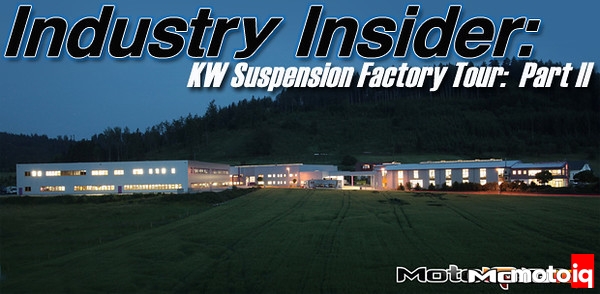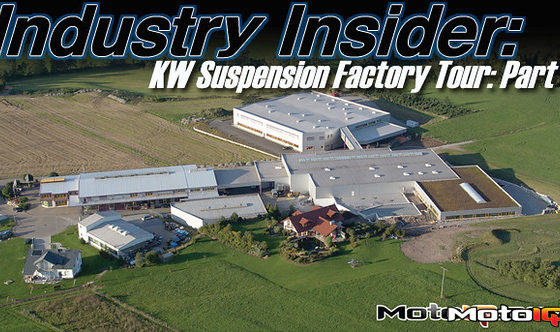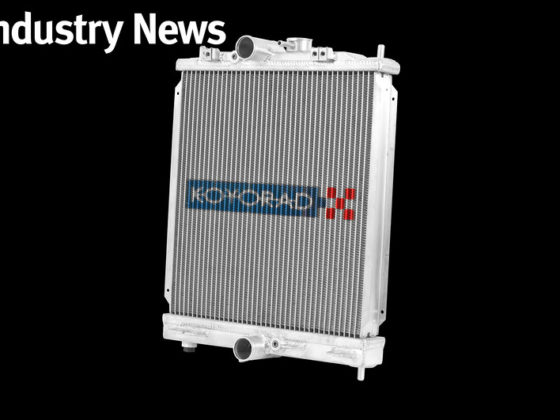
Industry Insider: KW Suspension Factory Tour Part 2
By Mike Kojima, photos by Jeff Naeyaert
In our last installment we left you deep inside KW Suspension's wonder factory. So far none of us has fallen into the shock fluid, turned purple and round, been sucked into TV's or mauled by squirrels. Now lets rejoin the tour!
 |
| Piston rod assemblies await stuffing into a strut tube. |
 |
| More piston rods and strut inner tubes with their process travelers. |
 |
| Foot or base valve controls the compression damping. The brass colored bottom knob allows for externally adjustable damping. The valve goes on the bottom of the inner tube and controls the fluid flow between the inner and outer tube. |
 |
| The adjustable part of the rebound valve in the piston. |
 |
| The piston rebound adjustable valve with the adjusting rod that goes through the shock shaft. |
 |
| More rebound valves in the foreground assembled on piston rods in the background. |
 |
| More examples of bespoke assembly fixturing. |
Sub assemblies like valves are assembled in cells and inventoried according to calibration. When a shock is assembled, the sub assemblies like base valves and piston/rods are brought together from inventory via automated conveyor belts and assembled into a shock in a manufacturing cell. Fluid is added and the shock is pressurized. After assembly, every single shock is inspected and run on a shock dyno with the results being recorded.
 |
| All shelving and containers at KW are standardized to DIN standards. This not only makes things efficient but saves space and allows for many parts to use an automated picking system to speed production and parts handling with fewer people. |
 |
| Automated conveyor belts move parts from assembly station to station within the plant. This reduces the amount of forklifts, handling and lifting done by people. This goes a long way towards making the plant safer and more efficient. |
 |
| Major assemblies have computerized assembly instructions and process documentation. |
 |
| Sub assemblies being assembled into a complete strut assembly. |
 |
| Fluid is added and the shock is pressurized. |
 |
| A newly completed Variant III awaiting final inspection and dyno testing. |
 |
| Every single shock and strut is dynoed to confirm proper assembly and operation. |
 |
| The actual damping curve measured by the dyno is compared to what it should be and the shock is either accepted or rejected. |
Not only OEM parts are assembled with such care but also every single coilover kit that KW makes, whether an aftermarket street kit or not is subjected to the same stringent quality standards and testing. If you are looking into a suspension kit, we can assure you that you are getting something assembled with utmost care with a company whose culture is continuous improvement, using the latest tools and methods in industrial quality control, verified by third party audits.
 |
| A new KW upcoming product, a hydraulic lift system so lowered cars can go up driveways etc, without damage. The system raises the car by a couple of inches in seconds. |
 |
| It's all in the label. This sticker has the serial number that enables KW to trace the production of the shock down to the very base materials and operators. This is super important if troubleshooting a process is needed due to warranty issues. This traceability is an ISO/QS requirement. |



